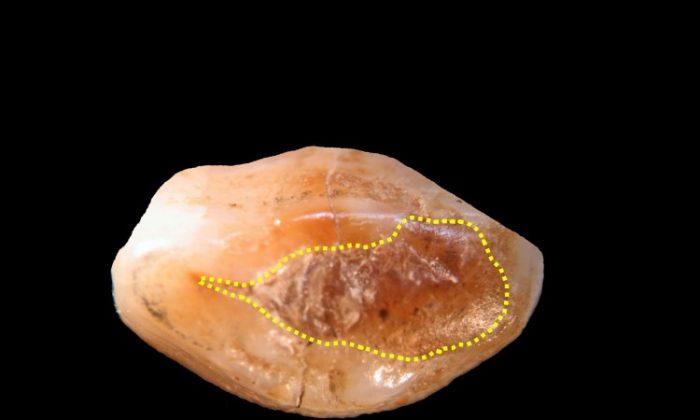Evidence that stone-age dentists were at work nearly seven millennia ago was discovered in Eastern Europe.
A team of mostly Italian researchers studied a human jawbone, found in Slovenia near the Italian border, that contains a cracked canine tooth with a beeswax filling inside.
“This finding is perhaps the most ancient evidence of pre-historic dentistry in Europe and the earliest known direct example of therapeutic-palliative dental filling so far,” said research leader Federico Bernardini at the Abdus Salam International Centre for Theoretical Physics in a press release.
Other evidence of Neolithic dentistry is extremely scant. For example, several molar crowns have been found in Pakistan, and an artificial tooth was found in the Egyptian cemetery of Gebel Ramlah.
The researchers believe that the beeswax was applied shortly before or after the man’s death as the edges of the tooth fracture are not worn. If he was still alive, the filling was probably used to reduce tooth sensitivity while chewing.

However, the severe wear of the tooth may not be due to eating, but to other activities like weaving, whereby the teeth were used to hold and cut thread.
In their paper, the researchers speculate that honey may have been used to increase the wax’s binding properties. They also point out that propolis, a similar resinous product made by bees, had other medical uses in prehistory.
“The discovery of propolis pellets preserved among the grave goods in some late Upper Paleolithic and Mesolithic burials of northeastern Italy testifies that hunter-gatherers were already using resinous aromatic bee products, suitable also for therapeutic-palliative purposes,” they concluded.
“Bee products were largely used by prehistoric communities for technological, artistic, and medical purposes, but here we report, for the first time, its possible use for therapeutic-palliative dental filling.”



Friends Read Free